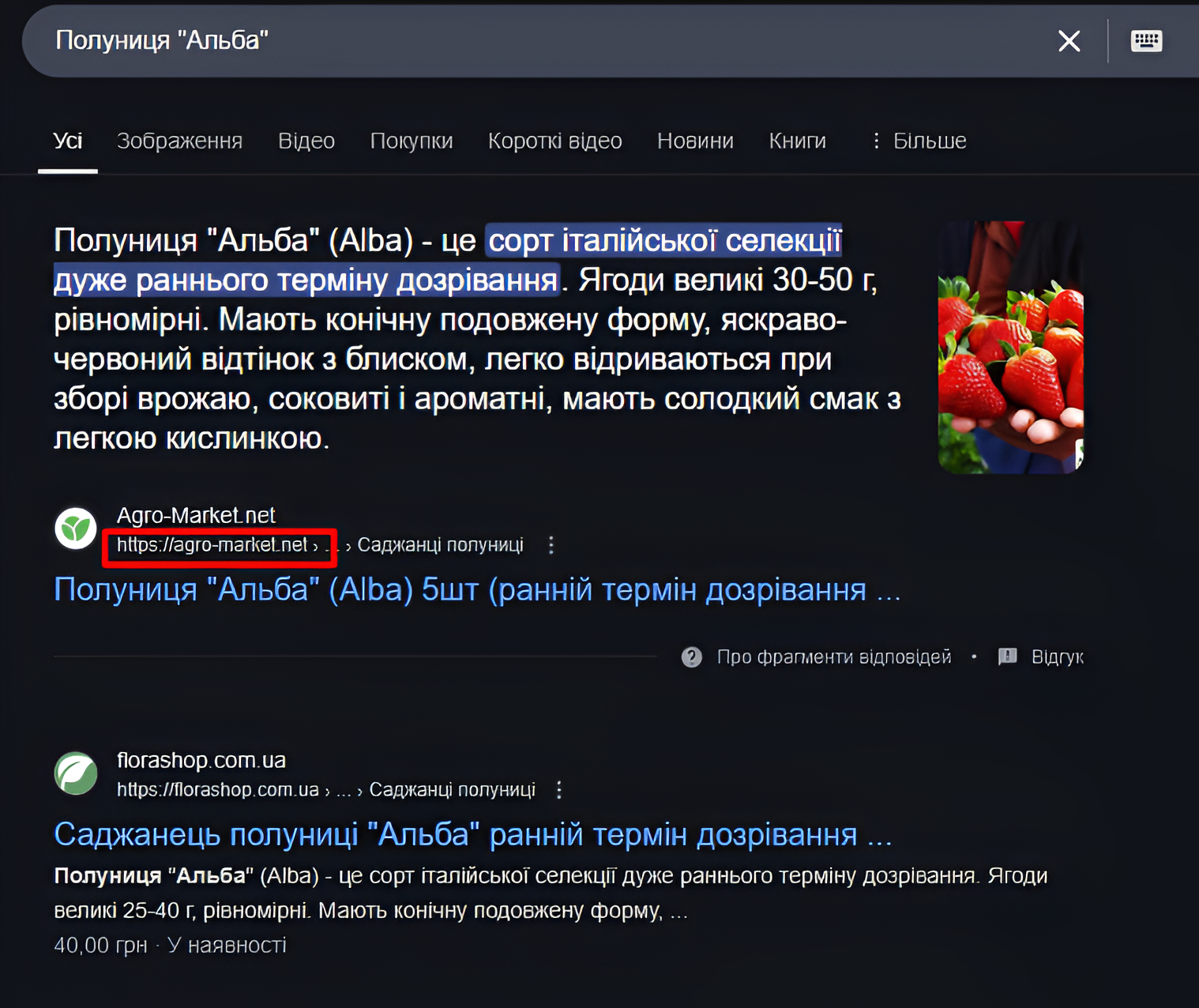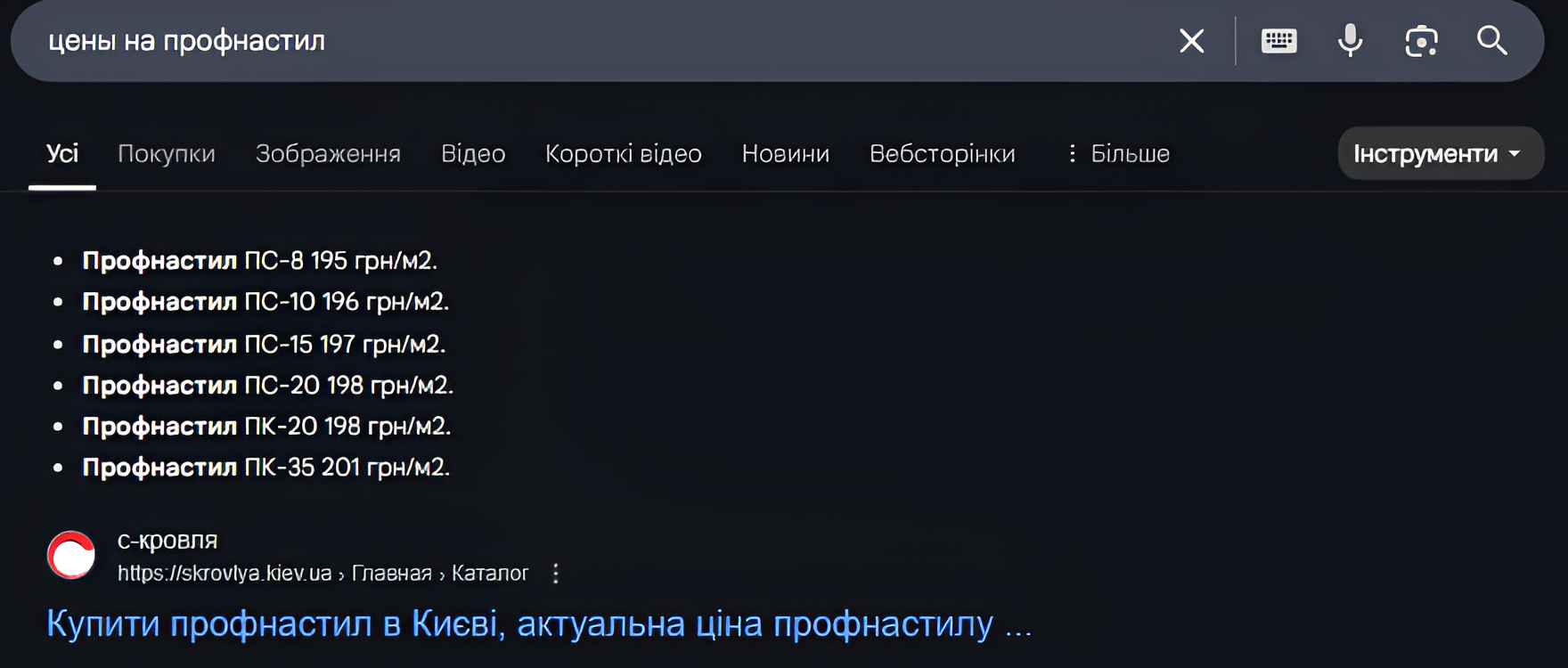Many companies specializing in online promotion create extensive checklists and audits spanning hundreds of A4 pages, most of which consist of filler or ineffective recommendations. Implementing them requires significant effort and the involvement of a programmer, but ultimately provides no tangible results. Website owners should understand that a quality technical SEO audit is not a template list of website problems, nor is it merely a way to get "green lights" in checking services. A site SEO audit is a comprehensive analysis of errors and missed opportunities on the resource. The result is a list of recommendations for the owner and technical tasks for the programmer, which, once implemented, help improve the website's visibility in search engines and increase traffic for targeted queries. In this article, we will reveal all the details, show checklists, explain what we do and why. Reading time is about 10 minutes, but be sure to read to the end, as there will be a few surprises waiting for you 🎁 So let's begin.
1) Secure protocol
Google's Guide to Using HTTPS Version: Google is committed to ensuring secure browsing for users, and even the search engine representatives state that the secure protocol provides a slight advantage in website ranking positions. The procedure is simple: purchase an SSL certificate from your hosting provider and install it on the server. It’s important to choose the right certificate depending on your goals (such as whether you will have subdomains or multiple domains). The result will be the following message:

After implementation, it's important to update the entire internal linking structure on the website (since we now have a new address), fix media content embedding and external script connections, set up 301 redirects from old pages to new ones, and properly configure the robots.txt and sitemap.xml files. All of this is thoroughly covered in our SEO audit.
2) SEO-friendly URL addresses
When generating pages, it's important to use the correct URL addresses (SEO-friendly – human-readable URLs).
❌ Examples of incorrect URLs:
➤ site.com.ua/news/2015/10/08/id1235213
➤ site.com.ua/news/2015/10/08/turkey_upgrades_railway_between_istanbul_and_bulgaria_border_1235213
✔️ Example of a correct URL:
➤ site.com.ua/news/2018/11/02/turkey-upgrades-railway-between-istanbul-and-bulgaria-border
As we can see, it's incorrect when, by looking at the link, the user cannot understand what they will see by clicking on it. It's also not recommended to use underscores or Cyrillic characters. For Google, underscores essentially combine all words in the URL into one unreadable string, and the weight of keyword occurrences in the link won't be taken into account. Cyrillic characters, when copied and pasted elsewhere, look like this:
site.com.ua/news/2015/10/08/%D1%82%D1%83%D1%80%D1%86%D0%B8%D1%8F_%D0%BC%D0%BE%D0%B4%D0%B5%D1%80%D0%BD%D0%B8%D0%B7%D0%B8%D1%80%D1%83%D0%B5%D1%82_%D0%B6/%D0%B4_%D0%BC%D0%B0%D0%B3%D0%B8%D1%81%D1%82%D1%80%D0%B0%D0%BB%D1%8C_%D0%BC%D0%B5%D0%B6%D0%B4%D1%83_%D1%81%D1%82%D0%B0%D0%BC%D0%B1%D1%83%D0%BB%D0%BE%D0%BC_%D0%B8_%D0%B3%D1%80%D0%B0%D0%BD%D0%B8%D1%86%D0%B5%D0%B9_%D1%81_%D0%B1%D0%BE%D0%BB%D0%B3%D0%B0%D1%80%D0%B8%D0%B5%D0%B9_1235213
It's inconvenient, isn't it?
The detailed requirements from Google are described here:
https://developers.google.com/search/docs/crawling-indexing/url-structure
3) Website scanning to check server responses
The entire website is scanned using custom scripts and external services like Screaming Frog to identify links with 300, 400, and 500 response codes.
It’s logical that if a user clicks on links on the site and ends up on non-existing pages, encounters slow server responses, or experiences long loading times due to redirect chains, the site will be uncomfortable to use. Since the mission of search engines is to display only the highest quality websites in search results, it sounds strange to say "top in search results," but these issues can prevent reaching the top. Therefore, when patterns and a large number of errors are found, a technical task is created to fix and eliminate the issues discovered during the website parsing.
4) Technical duplicates
This is an important point because many CMS platforms have the feature of generating duplicate pages, and for search engines, it is crucial that the user is provided with one canonical, main page. If a search bot sees two identical pages on different URLs, how can it determine which page to rank in the top results? In such cases, both pages usually lose their value in search results, making room for pages from other websites without duplicates. Therefore, different types of duplication are checked, and a technical task is provided to fix these issues.
Examples of types of duplicates:
➤ Pages with www and without www (often the site is accessible via two addresses, which essentially makes them two different sites for the search engine);
➤ Duplicates of the main page and all standard pages (sections, filters, products);
➤ Duplicates with different page extensions (* .php, * .html, * .htm, * /);
➤ Accessibility of pages with different letter cases (it's important to understand that there are real issues with generating such pages and vulnerabilities on the site, so blindly setting up redirects from uppercase to lowercase should be avoided, as there may be negative consequences);
➤ Duplicates of pagination pages, sorting, and display types.
The method of closing such duplicates depends on the situation. For example, the rel="canonical" attribute can be used to indicate the canonical page, or the meta tag depending on whether the bot should follow the links or not. Pagination, for example, is often not closed at all but is used for promoting regional queries. For instance, the second page is optimized for Kharkiv, the third for Odessa, and so on.
5) Text duplication
The site is checked for duplication with external sources and internal pages. Tools like candy-content, plagiarismdetector, and other services will instantly show if there is a problem with content duplication and provide a list of pages where these duplicates are present. Our task is to identify the issue, find the original source, and provide recommendations for content uniqueness, create a technical task to hide duplicate content blocks with scripts (so search engines don't see them and don't treat them as duplicates), as well as scripts for protecting the content from copying.
6) Duplicates in tags and meta tags
As is known, it is not advisable to promote several pages for the same queries, as it creates a relevance conflict. This prevents the search engine from choosing a single page to display in the top results, although there are exceptions. Therefore, we always check for identical title tags, H1, meta tags like Description to identify patterns in generating these duplicates. After that, we create a technical task to fix the situation, whether it involves generating tags using templates or writing page-specific titles and other tags manually. It all depends on the CMS and, of course, the type of website. Often, we see recommendations to fix the Keywords tag, but we recommend ignoring them, as developers spend time on it, yet implementing such tags doesn't affect the site in any way.
7) Robots.txt
It is often recommended to block unnecessary pages for the user through the robots.txt file, but it is important to know that the aliases you add to the file are only advisory and do not remove the page from the index. Furthermore, when blocking pages with the robots noindex meta tag, Google will not process it, and the pages will remain in the search results for a long time with a note that the page is blocked in robots.txt. Thus, the index will be filled with a large number of low-quality pages, which cannot be beneficial for SEO. At the same time, it is important to specify the main domain Host and a link to the Sitemap.xml file in this file.
The detailed requirements for robots.txt are described here:
https://developers.google.com/search/docs/crawling-indexing/robots/
8) Sitemap.xml
In general, for small websites, this is not a mandatory attribute, but it is important for websites with a large number of pages. In such a file, we specify in XML format the list of pages that the search bot should visit regularly, as well as the frequency of crawling. We provide recommendations for generating such a sitemap, considering all the nuances (for example, it won’t be very useful for the website if the sitemap includes links to outdated, distant pages or duplicates of important pages, which Googlebot will crawl, wasting crawl budget).
The detailed requirements for robots.txt are described here:
https://developers.google.com/search/docs/crawling-indexing/sitemaps/build-sitemap
9) Website Code Check
Since the 2010s, optimizers have been using validator.w3.org and similar validation check services as the main tool for finding code errors.
It’s important to know that such services are updated very rarely. When compared to the rapid development of web development, using these tools may either miss important errors or point out outdated issues, thus wasting valuable time on fixing them. Our specialists check the code independently, including checking for hidden elements on the site, a large number of commented or empty lines, the efficiency of code and script structure, and the accessibility of files like *.css, *.js.
10) The structure of a website
In our company, the task of "Creating the Website Structure" is offered as a separate service to ensure its high-quality execution. For this, it is important not only to work on the visible semantics of the site but also to fully cover the demand, identify all the relevant keywords for the niche, and provide recommendations for creating a comprehensive website with various landing pages that can meet all the niche’s needs. However, in general, it is possible to optimize the website structure without fully collecting semantics by relying on logic and experience. For example, for e-commerce sites, it is advisable to create product filtering pages (such as "Black laptops" and other variations), while for informational portals, tag pages work well. All this is described in the technical audit with requirements for configuring tag generation, which is important for proper ranking in search. It is also necessary to always analyze the page depth, assessing their accessibility for users and search bots by the number of clicks from the homepage.
For example, if a section page can only be accessed on the third click from the homepage, by navigating through the menu or other blocks, the page’s depth level is 4. Most of the time, with competition, this doesn’t allow the page to reach the TOP1. Therefore, we provide recommendations to reduce the page depth, implementing internal linking blocks through algorithms or adding additional informational blocks with links on typical pages. Here is an example of how the structure of a contractor verification website looks (landing pages are created for different search queries):

11) Correct use of Tags H1 – H2
It’s simple: on the first screen, you should use the highest-frequency keyword as the page title within an H1 tag; moreover, the H1 tag must not be repeated. As for H2–H6 tags, in general, they can be used freely and in any form, but it’s important to remember two things:
➤ <h2> tags carry more weight for search engines than <h3> tags and those that follow;
➤ header tags should not be used in site-wide informational blocks, as they dilute the page’s relevance for the targeted keywords.
12) Mobile-friendly
In recent years, mobile traffic has overtaken desktop traffic in most niches. Responsive design or a mobile version of the site is critically important to ensure usability on smartphones and tablets. After receiving confirmation of mobile-friendliness from Google, many SEO specialists consider the task complete. However, we go further: we analyze user behavior across different devices and browsers using Google Analytics 4 (GA4) to identify compatibility issues. Often, even the most visually appealing sites with a high percentage of mobile traffic (e.g., 75%) display incorrectly on popular smartphone models.
The highest level of optimization involves achieving excellent Core Web Vitals scores (loading speed, interactivity, visual stability), developing Progressive Web Apps (PWA) to enhance offline access and user experience, and optimizing for voice search, which is becoming increasingly popular.
13) Content optimization for AI
Artificial intelligence plays a key role in how search engines rank content. AI-focused optimization means creating relevant, well-structured material that aligns with user intent. We analyze queries using tools like Serpstat or Ahrefs to address both informational and transactional needs — for example, “how to choose a smartphone” or “buy a laptop in Kyiv.”
➤ We structure content for AI: <h1>–<h3> headings for clear hierarchy.
➤ We make text in short paragraphs (3–4 sentences).
➤ We create lists or FAQ blocks for snippets.
➤ We add LSI keywords (e.g., "usability" for web design), avoiding overstuffing.
This approach ensures a high likelihood that your content will be used by AI.
14) Microdata Schema.org (microformats)
"Bread is the head of everything" for an SEO specialist, without which there's no way forward, because how will people click on your site from the search results if it's presented like a grey mouse? There is microdata for many types of content on the site: for product pages, articles, videos, recipes, events, reviews with ratings, etc. But it's better to see once what it gives us in the search results:


You can read more here:
https://developers.google.com/search/docs/appearance/structured-data/search-gallery
15) Open Graph Protocol
To correctly display publications on social networks, you should use the OpenGraph markup, and not only configure it but also test how it will appear. If this is not done, all shares will look something like this:
And after configuring, it will look like this:

It seems like this is not entirely about SEO, but it will help with greater engagement from social networks and, as a result, provide a ranking boost due to social factors. Implementation instructions are here: https://ogp.me/
16) Checking the loading speed of all typical pages
Here we check the loading speed of all typical pages and conduct load testing, write technical tasks for improving loading speed, setting up Gzip compression, caching files, optimizing images, JS and CSS files, as well as other recommendations for speeding up the website.
17) Search results analysis
This is about studying the search results within the website. If search functionality is implemented on the site, it should work at all times. We provide recommendations for fixing bugs and develop search algorithms for some niche websites (e.g., VIN code search for auto parts sites).
18) Search results analysis for the website
This is about analyzing the search results within the website. If a search feature is implemented on the site, it should always work properly. We provide recommendations for fixing bugs, as well as develop search algorithms for some niche websites (e.g., VIN code search for auto parts sites).
19) Analysis of Unnecessary and Empty Pages for Users
There may be empty, outdated, and uninformative pages on the website, which over time create a relevancy conflict with important pages for SEO. Screaming Frog also shows the number of characters on a page and their size. By sorting by ascending order, it's easy to find a list of such pages that should be deleted and redirected. We also check their presence in search results.
20) Google Search Console (GSC) Analysis
In every project, our specialists during audits and monthly support analyze data from Google Search Console: checking for technical errors, indexing issues, mobile usability problems, Core Web Vitals, and more. We also configure important parameters — including geotargeting (if applicable), monitor indexing, and, if necessary, promptly remove confidential or unwanted pages from the index. If Google Search Console is not yet connected, we provide clear instructions or set it up ourselves.
21) Checking tags, meta tags, and texts for keyword stuffing
As with uniqueness checks, a check for keyword stuffing is also conducted. The service istio.com helps with this. Afterward, a manual check is performed to determine whether there is actually keyword stuffing and if it needs to be fixed. It's important not to rush recommendations until the query positions are assessed: if they are already in the top 10, corrections are usually not necessary.
22) Internal Linking
The checklist for all types of internal linking is as follows:
Menu
➤ Transition to another language version or regions
➤ Category filters
➤ Links to filter pages with product characteristics
➤ Breadcrumbs
➤ Of course, the logo
➤ Links to products from categories
➤ Pagination
➤ Page tags for info portals
➤ Information blocks, FAQ, "Related Products"
➤ "Top 5 popular products/services" to highlight the most important for the client
➤ Tag cloud-type interlinking, for example, under the search bar (where you can add the most priority queries) to strengthen priority queries

It is checked not only the presence of links to pages for users but also for search bots. Many blocks on the site may be dynamically loaded, and due to the lack of links in the code, search engines do not have access to these pages. A common mistake: the "show more products" button – the search bot does not see all the products that are dynamically loaded, so for Google, there are only 12 products on your site, not 312 (if there is no access to the products via other pages). Recommendations are also provided from the usability perspective, for example, it is very inconvenient when, from a Russian-language page, switching to the Ukrainian version redirects us to the homepage instead of the page we are currently on.
23) Checking the correctness of the "breadcrumb" chain
"Breadcrumbs" – Your path from the homepage to the page you are currently on, for example:

"Breadcrumbs" should be considered not only from the user's convenience perspective but also as an additional internal linking block. For example, if we are on the product page "Nokia 3310", in the "breadcrumbs" we can display not only the parent category "Brick Phones" but also the filter page for the brand "Nokia Phones" to strengthen it. Another way to use this block for SEO purposes is to replace the anchor "Home" with a more high-frequency keyword to promote the homepage with this keyword. For instance, if the homepage is optimized for "Balconies Turnkey," it's worth replacing "Home" in the breadcrumbs with this query, and you will get links from all site pages with a relevant anchor, which will boost the ranking of the mentioned query.
Regarding microdata, we provide a ready-made code template that your developers can use for convenience and to reduce the cost of implementing the recommendations.
24) Checking the presence of traffic-generating keywords on the website pages.
A basic principle in SEO – if a page does not contain the target keywords, it cannot rank for those keywords or will rank lower than competitors. Also, if the same word is used excessively, it may fall under a filter. Therefore, we provide recommendations for adding keywords to typical site blocks, where the inclusion of these words does not result in penalties. For example, adding the word "price" to all product listing prices or replacing "add to cart" with "buy" will increase the relevance of the page for commercial queries.
25) Generation of Title, Description, H1
For large websites and online stores with thousands of similar pages (categories, products, filters), it doesn't make sense to manually write tags — this would take too much time and lead to the loss of potential for pages that won't be optimized at the first stage. However, optimizing them is essential, as tags with keywords have a significant impact on ranking.
In such cases, setting up tag generation based on predefined templates comes to the rescue. By analyzing the semantics and finding patterns and similarities for different pages (for instance, smartphones and stoves are often searched with terms like "buy," "price," "Kyiv," etc.), we create templates for tag generation using a variable like "page name" for each page type. For example:
➤ for category pages;
➤ sections;
➤ filters;
➤ informational pages;
➤ products.

In the H1 heading, the most frequent query should be used in a readable format, in the Title — a minimum of words with maximum weight, and the Description, although it doesn’t directly influence ranking, significantly helps attract clicks from search results when correctly formatted (highlighting, appeal, and relevance to the query). It’s also important to immediately optimize H1 tags for all pages based on specific nuances, using templates or manual optimization per page, as this will provide the maximum effect.
For example, if the filter page is titled "Smartphones – Color: White", it’s better to rephrase it to the most frequent query – "White Smartphones". And if the site has a thousand products with the title "Red Umbrella", it’s useful to add the product code — this not only helps avoid duplication but also increases the chances of ranking in the TOP for queries that specify the product code (yes, users search like this too). The result of this optimization will be both an increase in rankings for the most important queries and the generation of attractive snippets that users want to click on, such as:

26) Checking for Search Engine Penalties
In Google Search Console, there is a section called "Manual Actions"
If there is no information about "manual actions," we check the analytics for any traffic drops in organic search throughout the history. If such a drop is detected, we then examine which specific pages or sections were affected, evaluate the texts for keyword stuffing, and review the backlink profile using key metrics to identify potential causes of penalties. If there are issues with content, such as keyword stuffing or non-uniqueness, we create a plan to replace or remove such content. In the case of problems with the backlink profile, we disavow toxic links using the Disavow tool. It is important to note that resolving penalties can take time, ranging from a few weeks to several months, depending on the specifics.
27) Multilingualism and multiregionalism
Another effective way to cover the entire search demand is by creating separate pages for different languages and regions. To do this, we generate content translations (for example, using the Google Translate API with subsequent manual corrections), and after publishing the language versions, we link them together using the hreflang tag — a convenient generator can help set it up:
aleydasolis.com/english/international-seo-tools/hreflang-tags-generator

When it comes to regionality, it’s more complicated — there is often the question of whether to create pages for other countries and cities, or whether to create a subdomain or category on the website, and whether such pages would be considered duplicates, or if it’s enough to just add a list of cities on one page. There is no clear answer here, and it is always worth analyzing the top search results and the positions of our queries based on the current situation — then recommending the necessary adjustments. For example, for an informational portal or a mobile phone top-up service, creating regional pages is not needed, as regional queries simply don’t exist. However, for an online store or a service website, such pages are often required.
28) Image optimization
According to Google, the popularity of image search is growing. People are increasingly reluctant to read information, preferring to see a beautiful, vibrant photo and, based on visual appeal, click through to the desired page. Take teapots, for example: sometimes it’s much easier to simply buy a product that “pleases the eye” every day than to go through a list of similar items and sort them by features you don’t understand, making it even more confusing. And if you add imperfect filtering on the site, inconveniences, and discrepancies in the product descriptions, you might end up without a teapot altogether.
That's why it's important to appear in image search results, to cover demand and attract people who choose products based on visual appeal:
So, we provide alt tag generation templates (a tag for images that gives them more ranking weight based on search queries) for all types of photos on the website with the necessary variables.
29) Getting into the featured snippet block
The trend in recent years is aiming for position zero. There are plenty of examples:
For all these types, we have already found the secret to getting into such blocks. Here are examples from the search results to illustrate what we're talking about:



Note that the site usually ranks both in the zero position and other positions in the TOP 10. The "Related Queries" block also takes top positions, even though they are only indirectly relevant to the query, they can also redirect users to your site. The conclusion is simple – content should be written for all possible informational queries in the "correct" format, which will increase the chances of capturing the "entire TOP." The audit describes the methodology for structuring different types of content to get into these blocks.
30) Content Optimization for Voice Search
Voice search is no longer a novelty, but many still do not adapt their content to the peculiarities of spoken queries. People phrase their questions in Google the way they speak in real life: for example, "where to buy the best coffee maker in Lviv" instead of "coffee maker Lviv price."
For optimization, we create separate blocks in the format of "question + clear answer," which align with the structure of voice queries. This increases the chances of landing in the Featured Snippet (zero position) and makes the content relevant for voice search. It works especially well with structured data such as FAQPage, HowTo, or QAPage. Voice queries are the new "keyword," so the content must match its conversational form, not just the key phrase.
31) Affiliate Check
Imagine the value of two sellers at a market who look the same, with identical products and prices. What if there are ten of them? This takes up unnecessary space and harms "healthy competition," as well as consumer choice. Business owners may have a higher chance of selling something, but in such a situation, no one else wins except the owner. It’s unlikely that such a market will be in demand. This situation in search results is called "affiliate sites," and search engines actively fight against it. If your goal is to occupy as many positions in the top search results as possible by creating multiple websites, it’s important to ensure maximum differences between them: in design, structure, content, contact information, and even whois data. Otherwise, search engines may recognize the affiliation, and our specialists will identify these connections and provide instructions on how to remove the affiliate filter. If two of your sites are ranking for similar queries and can be connected in any way, search engines will either lower one of them or both in the rankings for these queries.
32) Recommendations for website migration/deployment
If you are developing a new, optimized website to replace an outdated one, there is always a high probability of a drop in positions and traffic due to changes in the CMS, URLs, website code, content, and structure. It is important to keep in mind that, for example, when changing URLs and migrating to a new website without proper redirects from old pages to new ones, users will encounter 404 errors, and the weight of old pages with history will be lost. Therefore, when migration is necessary, as part of the audit, we provide the necessary recommendations to minimize the chances of traffic and ranking drops, as well as ensure redirects from old pages to new ones (redirect maps).
33) Other mistakes
There are always more specialized, unique sites or nuances that are not found on typical sites within the niche, so the checklist always includes a point about "other mistakes," which involves checking the site for atypical errors and fixing them.
34) Development of a new website
It is worth mentioning separately our service "Recommendations for Creating an Optimized Website," developed and tailored for each type of site, updated based on the client’s input data about their business. The essence of this service lies in saving costs on the development of a new website for future promotion and accelerating SEO results. Why is this beneficial?
➤ After creating a "beautiful" website, developers will not need to redo the site according to the SEO specialists' technical requirements. It will have a list of specifications and direct instructions, allowing the development to happen in full compliance with all necessary SEO optimization features. In other words, you save almost half the cost on development and optimization, hitting two birds with one stone.
➤ Most experiments have shown that when an already optimized site is indexed, the traffic growth result is much higher than when a "raw" site is launched with SEO optimization done later. Search engines recognize the "quality" of the resource, understand that you've created a product ready for users, and allow it to enter the TOP faster, reducing the duration of the "Sandbox" (an algorithm that temporarily limits the appearance of new websites in the TOP).
Let's summarize
All these points in the checklist are a general description of what is included in the audit and why we do it. Of course, each of them is broken down into numerous subpoints of analysis and practical recommendations for the technical task that can be handed over to your developer for implementation.
If you’ve read to the end and are now scratching your head because there is so little knowledge for self-optimization of a website, yet so much conflicting information online, we promise to conduct an SEO audit of your website at the highest level, based on the experience of over a hundred projects. We guarantee that implementing our recommendations will lead to a traffic boost within just a few weeks.
For those who made it to the end, we’re giving away a 20% discount promo code for the audit! Enter the phrase "PROMO CODE FOR AUDIT" in the application form on the website next to your name, as shown below. Our managers will contact you and offer a deal you won’t be able to refuse!

If you order SEO promotion for your website, an audit at the first stage of promotion is a necessary condition for optimal promotion with the best results.
Англійською:
💡P.S.: For those SEO gurus who find the trick in this article that helps it rank in Google's TOP results, send us your resumes with the answer to E-mail: manager@seomarket.ua. We are always looking for talent!
Author: Vadim Ivashkevich





